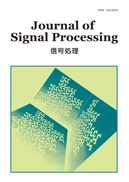Volume 18, Issue 1
Displaying 1-8 of 8 articles from this issue
- |<
- <
- 1
- >
- >|
-
2014Volume 18Issue 1 Pages 1-15
Published: January 25, 2014
Released on J-STAGE: January 25, 2014
Download PDF (2144K) -
2014Volume 18Issue 1 Pages 17-28
Published: January 25, 2014
Released on J-STAGE: January 25, 2014
Download PDF (4010K) -
2014Volume 18Issue 1 Pages 29-38
Published: January 25, 2014
Released on J-STAGE: January 25, 2014
Download PDF (1498K) -
2014Volume 18Issue 1 Pages 39-48
Published: January 25, 2014
Released on J-STAGE: January 25, 2014
Download PDF (3682K) -
2014Volume 18Issue 1 Pages 49-56
Published: January 25, 2014
Released on J-STAGE: January 25, 2014
Download PDF (1168K) -
2014Volume 18Issue 1 Pages 57-62
Published: January 25, 2014
Released on J-STAGE: January 25, 2014
Download PDF (1392K) -
2014Volume 18Issue 1 Pages 63-70
Published: January 25, 2014
Released on J-STAGE: January 25, 2014
Download PDF (4274K) -
2014Volume 18Issue 1 Pages 71-76
Published: January 25, 2014
Released on J-STAGE: January 25, 2014
Download PDF (675K)
- |<
- <
- 1
- >
- >|
